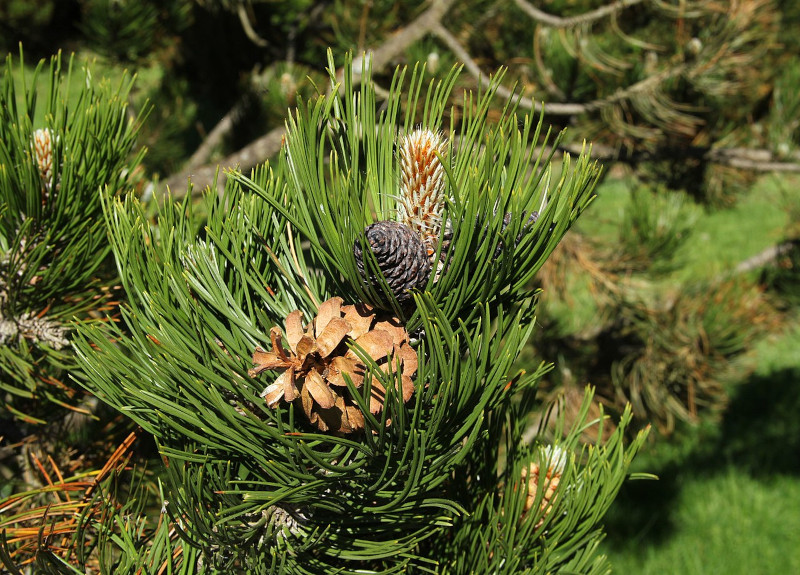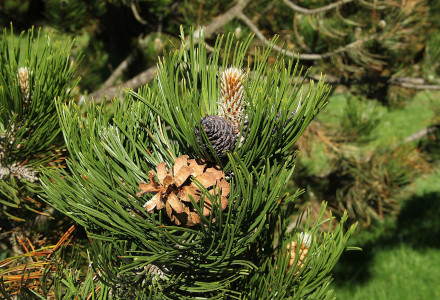
Photographer: Crusier
CC License: https://bit.ly/3zUgShd
Bosnian Pine Facts
- Likely the best known individual specimen of the rather astounding Bosnian Pine resides in Bulgaria. This specimen also bears the rather interesting name of Baikushev’s Pine.
- This particular individual tree stands roughly 79 ft (24 m) tall and experts also estimate its age to be least 1,300 years, perhaps even older than that.
- Also, the species was first officially described by botanist Hermann Christ, in 1863, based on samples collected from the heights of Mount Olympus.
- Some of its rather unique physical characteristics have led to its becoming quite popular as an ornamental tree, common in parks.
Related Articles
Kauri Tree Bois Dentelle Ghost Gum
Bosnian Pine Physical Description
The rather remarkable Bosnian Pine represents a plant species known for the distinctiveness of its seed cones. In addition, when these first appear, they show a rather bright purplish blue in color.
These cones also reach an average length of roughly 4 in (10 cm).
Yet, as these mature, they darken to the rather more common brown shade. At full growth, the bark of the tree becomes an ash gray in color.
Individuals also typically attain a maximum height of roughly 115 ft (35 m). However, smaller sizes remain the more common.
- Kingdom: Plantae
- Phylum: Pino[hyta
- Class: Pinopsida
- Order: Pinales
- Family: Pinaceae
- Genus: Pinus
- Species: P. heldreichii
Bosnian Pine Distribution, Habitat, and Ecology
The Bosnian Pine evolved as a species of pine endemic to southern Italy and mountainous regions of the Balkans, in Europe. It also only occurs in seven countries. These countries include Albania, Bosnia, Bulgaria, Greece, Italy, Macedonia, and Serbia.
The fascinating tree typically grows at altitudes ranging from between 4,900-8,200 ft (1,500-2,500 m). This variety of evergreen also averages 6.5 ft (2 m) in trunk diameter.
The species remains known for its great hardiness and resistance to extreme weather conditions. Due to this, it grows well in either partial or full sunlight. Its rate of growth stays slow but quite steady.
Fortunately, the tree appears to be able to adapt to extreme environmental conditions. For the moment, the IUCN lists the species as Vulnerable.
Like many species, its greatest threats appear to be climate change and habitat loss.
Species Sharing Its Range
Aporia crataegi Shrill Carder Bee Iberian Lynx
Check out our other articles on 5 Rare Mind-Blowing Cloud Types, Staghorn Coral, Laguna Verde, Southern Tamandua, New Zealand Giraffe Weevil, Rainbow Snake

